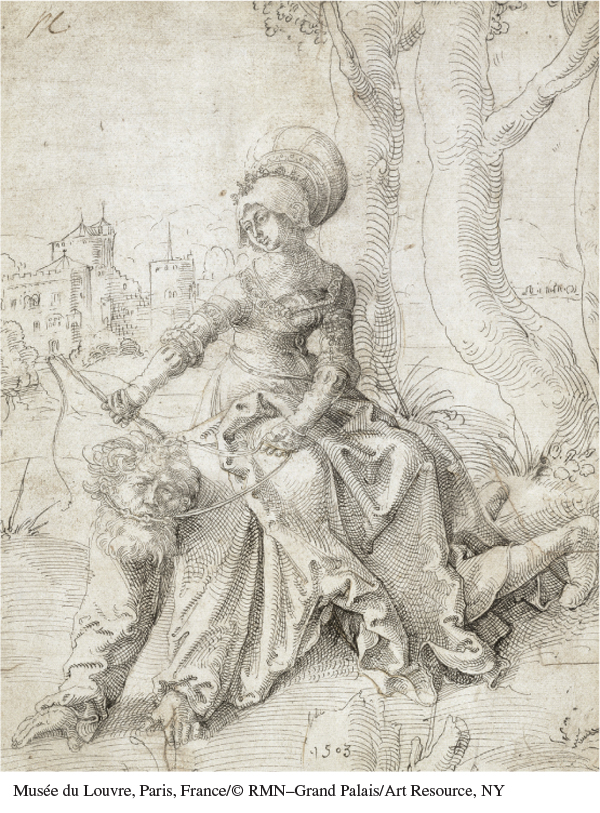A History of Western Society: Printed Page 380
A History of Western Society, Value Edition: Printed Page 365
A History of Western Society, Concise Edition: Printed Page 381
Gender Roles
Renaissance people would not have understood the word gender to refer to categories of people, but they would have easily grasped the concept. Toward the end of the fourteenth century, learned men (and a few women) began what was termed the debate about women (querelle des femmes), a debate about women’s character and nature that would last for centuries. Misogynist (muh-
With the development of the printing press, popular interest in the debate about women grew, and works were translated, reprinted, and shared around Europe. Prints that juxtaposed female virtues and vices were also very popular, with the virtuous women depicted as those of the classical or biblical past and the vice-

Beginning in the sixteenth century, the debate about women also became a debate about female rulers, sparked primarily by dynastic accidents in many countries, including Spain, England, Scotland, and France, which led to women’s ruling in their own right or serving as advisers to child-
Ideas about women’s and men’s proper roles determined the actions of ordinary men and women even more forcefully. The dominant notion of the “true” man was that of the married head of household, so men whose social status and age would have normally conferred political power but who remained unmarried did not participate in politics at the same level as their married brothers. Unmarried men in Venice, for example, could not be part of the ruling council. (See “Living in the Past: Male Clothing and Masculinity.”)
Women were also understood as either “married or to be married,” even if the actual marriage patterns in Europe left many women (and men) unmarried until quite late in life (see Chapter 11). This meant that women’s work was not viewed as financially supporting a family — even if it did — and was valued less than men’s. If they worked for wages, and many women did, women earned about half to two-
Men who work in the vineyards, doing work that is skilled, are to be paid 16 pence per day; in addition, they are to receive soup and wine in the morning, at midday beer, vegetables and meat, and in the evening soup, vegetables and wine. Young boys are to be paid 10 pence per day. Women who work as haymakers are to be given 6 pence a day. If the employer wants to have them doing other work, he may make an agreement with them to pay them 7 or 8 pence. He may also give them soup and vegetables to eat in the morning — but no wine — milk and bread at midday, but nothing in the evening.9
The maintenance of appropriate power relationships between men and women, with men dominant and women subordinate, served as a symbol of the proper functioning of society as a whole. Disorder in the proper gender hierarchy was linked with social upheaval and was viewed as threatening. Of all the ways in which Renaissance society was hierarchically arranged — social rank, age, level of education, race, occupation — gender was regarded as the most “natural” and therefore the most important to defend.